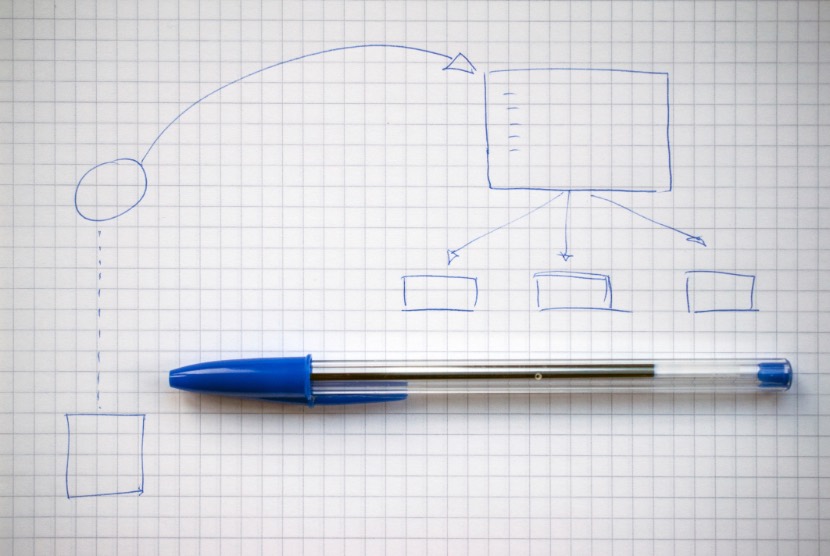Getting The Attention Of Visual Thinkers

Thinking Of The Thinkers – Communication that Connects
Do you think in pictures? This phenomenon of thinking through visual processing is called visual thinking (also sometimes referred to as spatial learning or image thinking). A simple test to see if you are is to think of an idea. Do you see it in your mind as an image or a collection of images? If you do, you are actually among the majority of people who are visual thinkers, which is about 60-65% of the general population.
So many people primarily perceive words and thoughts as a succession of pictures. Some other indicators of visual thinking brains are:
- People who organize ideas graphically, like charts, maps, diagrams, & plots
- Remembers and recalls information as images or series of images
- Estimates numbers based on physical attributes
- Pay attention to things in terms of how it looks like color, size, and shape (in contrast to how something smells, tastes, sounds, or feels)
Think back to when you were a baby. How did you first learn about the things around you? Before you could relate sound, touch, taste, and smell with meanings, your eyes were one of your most powerful sensory tools to make sense of the world. This capacity of the brain’s visual processing area helps people engage their visual thinking capabilities. Visual thinking is the primary method for many to help organize their thoughts, develop original ideas, and retain crucial information.
Understanding Picture Clear
Information clarity is improved through visual thinking. No matter what thinking you prefer, our brains are designed to process and remember visual information rapidly. MIT neuroscientists found that the human brain can process an entire image in as little as 13 milliseconds. So, whether providing or receiving information, using visual thinking makes information clearer and easier to understand than stimulating other senses.
Related Links: Visual vs. Textual Information – Which Gets The Attention?
Tools to Aid Visual Thinking
Like any skill, a person can exercise their visual thinking ability to help visual thinkers organize and sort information more effectively. By Improving this ability to clarify or comprehend complex concepts visually, a person can start linking new instructions or knowledge with images faster and better transfer it to long-term memory.
When faced with complex information to process or share, try to use these visualization tools:
- Open virtual or physical whiteboards for doodling and note taking
- Map out ideas and processes on paper
- Add graphics to information, not just text alone
- Create diagrams and charts to summarize lots of information and numbers in a visual
Get Your Point Across When Dealing with Visual Thinkers
If you meet and need to communicate with visual thinkers, here are some tips and tricks to use:
- First and foremost is to make the exchange or conversation as visual as possible. Turn it into a visual exchange if it’s a phone call, email, text message, or letter communication. Phone calls can become video calls, and written information can be face-to-face meetings.
- Secondly, use some visualization tools mentioned above to help the communication process. For example, open virtual whiteboards, draw out ideas on paper, and pull up images, and videos on your laptop to share.
- And lastly, verbally talk about your ideas with visual words. When describing things, use vocabulary like “picture this,” “imagine that,” or “can you see.” This will help the visual thinker picture what you are talking about and make their connections more robust.
Related Links: Visual Communication And Communication Success
Differences Between Visual and Other Thinking Modes
Visual thinkers: Consider information by conjuring up images in their minds (somewhat like watching a movie). Thoughts occasionally need to be drawn out visually to be thoroughly developed.
Verbal thinkers: Process information as an internal conversation or monologue that is expressed in words they hear in their heads. They frequently have to end several speech threads in their mind before they can focus entirely on new information. Sometimes, verbal thinkers need to talk it out to understand or be understood, even if it is only to themselves.
Sensory thinkers: These thinkers process the world primarily through their senses. They group people, things, and events according to their sensory characteristics, such as appearances, sounds, tastes, and scents. Sensory thinkers also use a lot of visual information in their understanding but place such information at the same or similar importance as the rest of the information coming in from their other senses.
Create Communication Scenarios Design For Success
You may have been surprised to find out that you are a visual thinker yourself today. It may also be surprising that two-thirds of the population are also visual thinkers. With this new awareness, a person and their business can make the most out of their communications to tailor them for visual learners.
Individually, with a deeper understanding of how you and others around you think and by using some simple techniques described above, you can better get your point across and be known as a good communicator.
Besides all this, acknowledging and understanding visual thinkers in marketing, sales, and customer services are essential for successful business communication. Designing business communication to highlight and empathize visual information such as infographics, pictures, videos, and demonstrations makes your communications easier to understand and be remembered. In addition, focusing more on face-to-face or video conferencing communication will allow you to make a deeper connection with customers.
Visual thinkers are amazing. If you can picture yourself as a top communicator, then visual thinking is a skill that needs mastering.
